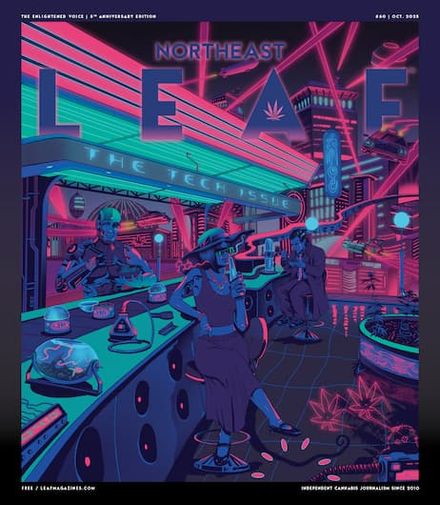In Marina del Rey, California, I stopped at a food truck with friends (including Leaf Magazines’ Matt Jackson). We were stoned, fair enough, but the menu photos were ridiculous: pasta glowing like lacquer, arancini hovering in digital perfection. We realized the images were created by artificial intelligence. The food was bland and overpriced, nothing like the promise on the screen. Everyone laughed. Who would trust a menu like that for something that is meant to be enjoyed?
In Cannabis, we already do.
Most California dispensaries keep jars sealed. You can’t smell or touch flower. In other states, you never even walk inside. You scroll an app, tap an eighth and wait for delivery. Online, feeds are filled with glossy nug shots, AI-styled strain art and template-based promo videos. People scoff at AI food pics but accept fakery as the default way of buying weed. The irony is thick: The plant has always been about sensory immersion — scent, sight, touch, taste — yet the legal market has designed out nearly all of that contact.
It isn’t accidental. These choices are built into legalization. Regulators ban open jars. Tech platforms make efficiency the selling point. Brands, under pressure to scale, crank out stock-style content and lean on AI because it’s cheap, fast and endless. Rescheduling looms, and while it isn’t legalization, it will add another layer of compliance, polish and corporate marketing. Cannabis is moving into the mainstream, and the buying experience is being flattened into something safe, sterile and unreal.
Artificial intelligence on its own isn’t just a gimmick layered on top of the industry, but a symptom of the same forces that legalization unleashed. Regulation pushed Cannabis into sealed jars and delivery menus, which already reduced the experience to words and images. AI simply accelerates that trend by supplying limitless, polished content to fill the gaps. In other words, once you design a system where consumers can’t use their senses and must rely on representations, it’s almost inevitable that those representations become increasingly synthetic. The technology is new, but the logic behind it has been baked into legalization from the start.
That’s progress in some ways. Legal markets mean less risk, more access and the chance for people to work in daylight. For decades, weed was purchased in backyards, on couches, at concerts or from the trunk of a friend’s car. It wasn’t safe, but it was real. Legalization untangles us from that underground, but it also scrubs away the informality, the intimacy and the rituals. You don’t linger, you don’t smell, you don’t talk. You pick from a menu — sometimes a real one, increasingly a digital or even artificial one.
Progress comes with a cost: the messy, sensory and communal rituals that gave Cannabis culture its soul are being stripped away. More than mere nostalgia, those rituals were how people learned about cultivars, built relationships with growers and created the language as well as the style that made Cannabis unique. Without them, the market risks collapsing into something indistinguishable from Big Pharma or Big Alcohol.
Cannabis is a plant, yes, but one with a strong human culture orbiting it. If menus, apps and AI images define it, the culture shrinks until weed is just another product on a shelf. That’s not what brought people to it in the first place. This plant has always been more than the high. It’s been about how we gather, how we share and how we resist sameness.
The ask is simple: As Cannabis goes mainstream, demand authenticity. Genuine photos, authentic voices and real spaces where the plant can be experienced as more than just a picture. Otherwise, legalization delivers safety without culture, and that’s not liberation at all. It’s just like that food truck in Marina del Rey: shiny pictures, digital promises and a final product that leaves you wishing you’d trusted your senses instead.
Written by Jackie Bryant (@jacqbry)









